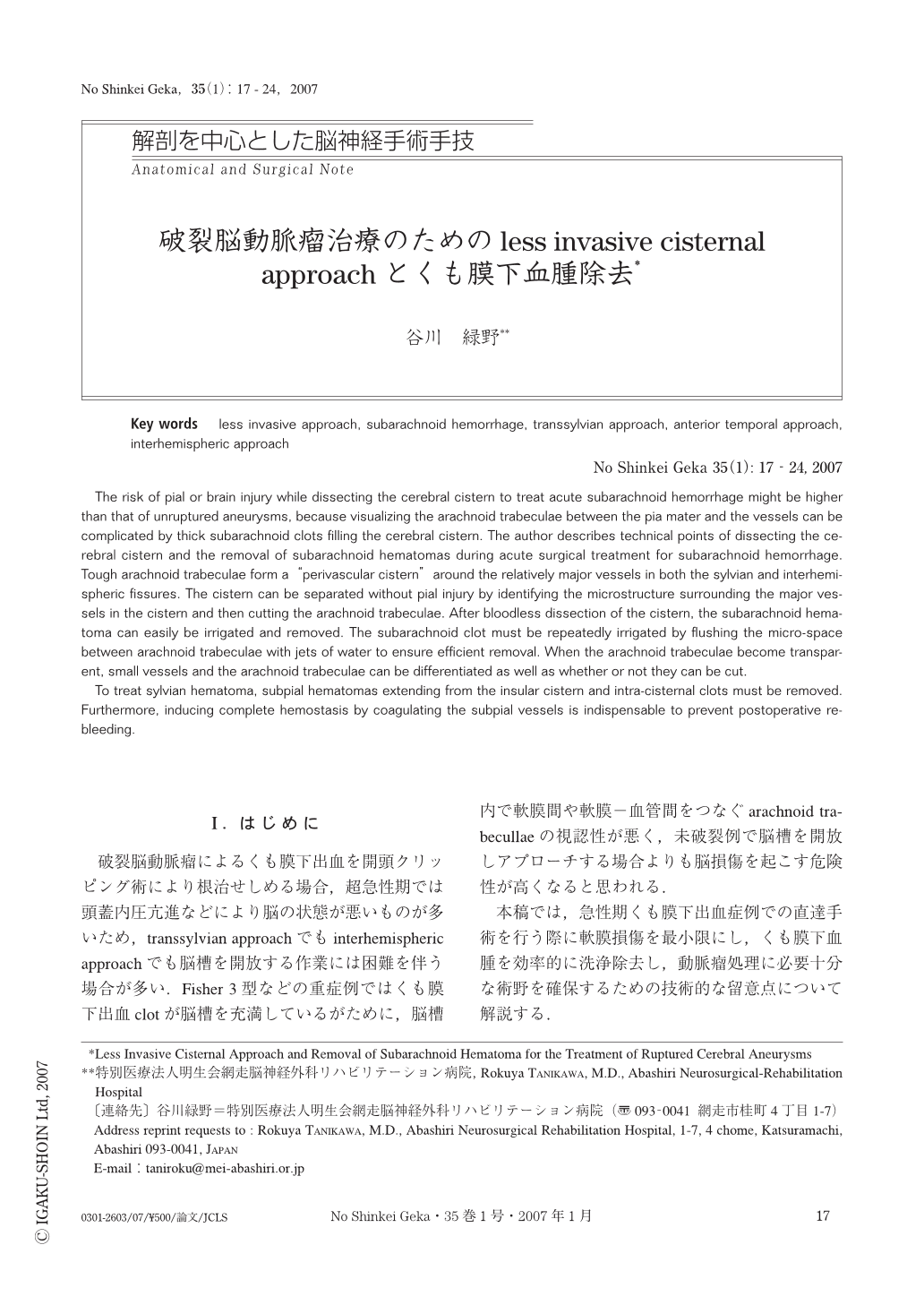Japanese
English
- 有料閲覧
- Abstract 文献概要
- 1ページ目 Look Inside
- 参考文献 Reference
Ⅰ.はじめに
破裂脳動脈瘤によるくも膜下出血を開頭クリッピング術により根治せしめる場合,超急性期では頭蓋内圧亢進などにより脳の状態が悪いものが多いため,transsylvian approachでもinterhemispheric approachでも脳槽を開放する作業には困難を伴う場合が多い.Fisher 3型などの重症例ではくも膜下出血clotが脳槽を充満しているがために,脳槽内で軟膜間や軟膜-血管間をつなぐarachnoid trabecullaeの視認性が悪く,未破裂例で脳槽を開放しアプローチする場合よりも脳損傷を起こす危険性が高くなると思われる.
本稿では,急性期くも膜下出血症例での直達手術を行う際に軟膜損傷を最小限にし,くも膜下血腫を効率的に洗浄除去し,動脈瘤処理に必要十分な術野を確保するための技術的な留意点について解説する.
The risk of pial or brain injury while dissecting the cerebral cistern to treat acute subarachnoid hemorrhage might be higher than that of unruptured aneurysms, because visualizing the arachnoid trabeculae between the pia mater and the vessels can be complicated by thick subarachnoid clots filling the cerebral cistern. The author describes technical points of dissecting the cerebral cistern and the removal of subarachnoid hematomas during acute surgical treatment for subarachnoid hemorrhage. Tough arachnoid trabeculae form a“perivascular cistern”around the relatively major vessels in both the sylvian and interhemispheric fissures. The cistern can be separated without pial injury by identifying the microstructure surrounding the major vessels in the cistern and then cutting the arachnoid trabeculae. After bloodless dissection of the cistern, the subarachnoid hematoma can easily be irrigated and removed. The subarachnoid clot must be repeatedly irrigated by flushing the micro-space between arachnoid trabeculae with jets of water to ensure efficient removal. When the arachnoid trabeculae become transparent, small vessels and the arachnoid trabeculae can be differentiated as well as whether or not they can be cut.
To treat sylvian hematoma, subpial hematomas extending from the insular cistern and intra-cisternal clots must be removed. Furthermore, inducing complete hemostasis by coagulating the subpial vessels is indispensable to prevent postoperative re-bleeding.

Copyright © 2007, Igaku-Shoin Ltd. All rights reserved.


